On October 26, RECORD hosted the 2023 edition of its Innovation Conference at the Museum of Jewish Heritage in New York City. More than 250 people representing a wide-swath of the AEC industry—firm leaders, architecture students, and design media professionals among them—attended the full-day event, which this year took on the theme of “Next Generation” and included presentations from a cohort of practitioners and educators, including an impressive six RECORD Design Vanguard firms. Each speaker—or in several cases, speaker duos—discussed completed and in-progress projects that highlight how shifting values, emerging technologies, and innovative concepts are driving the future of design. Also “presenting” during the conference was a bout of preternaturally nice fall weather, which guests enjoyed between sessions and during meals from the Roche-Dinkeloo–designed waterfront museum’s outdoor terraces and second-floor event hall, with its sweeping views of the Hudson River and beyond.
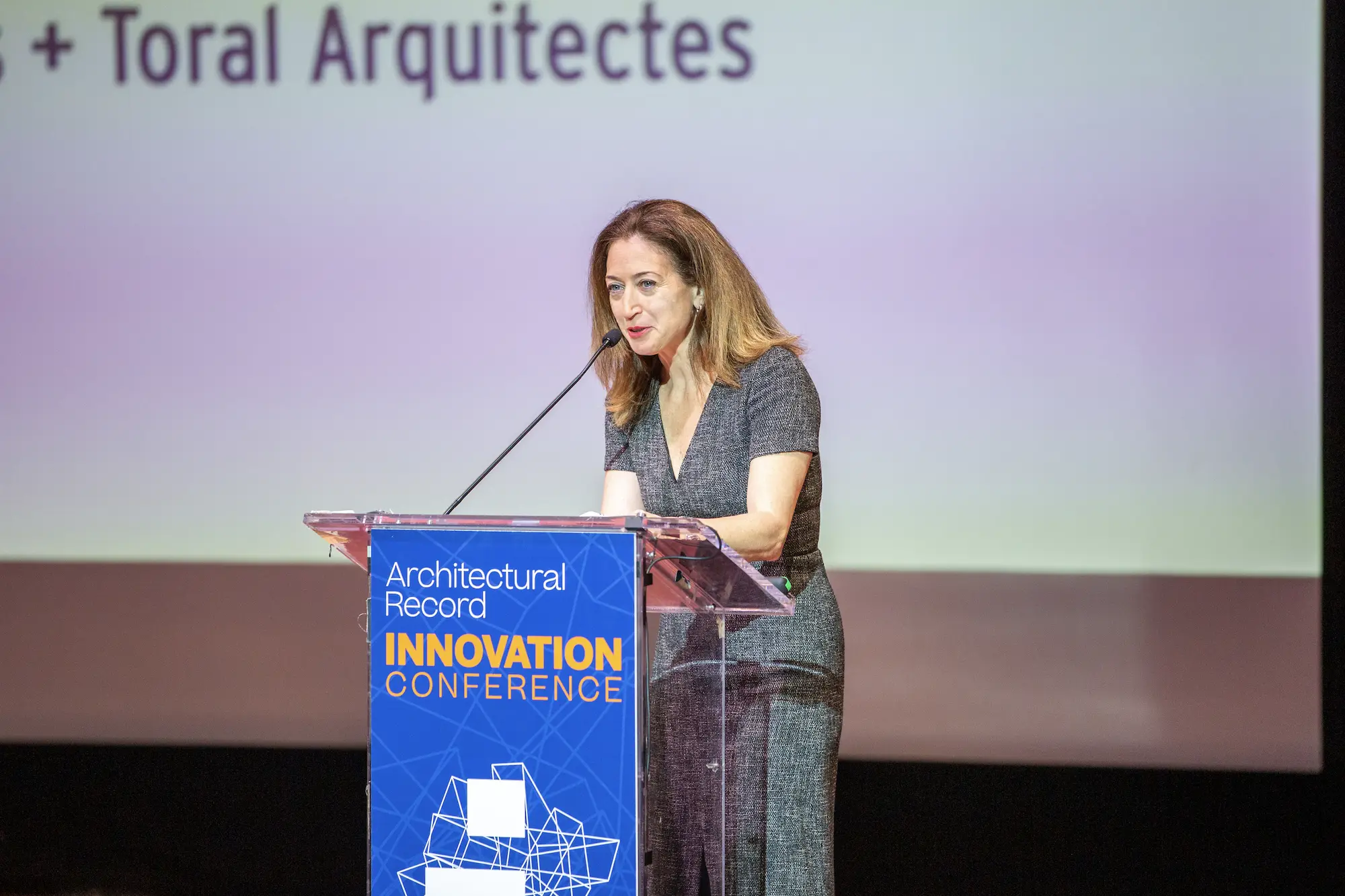
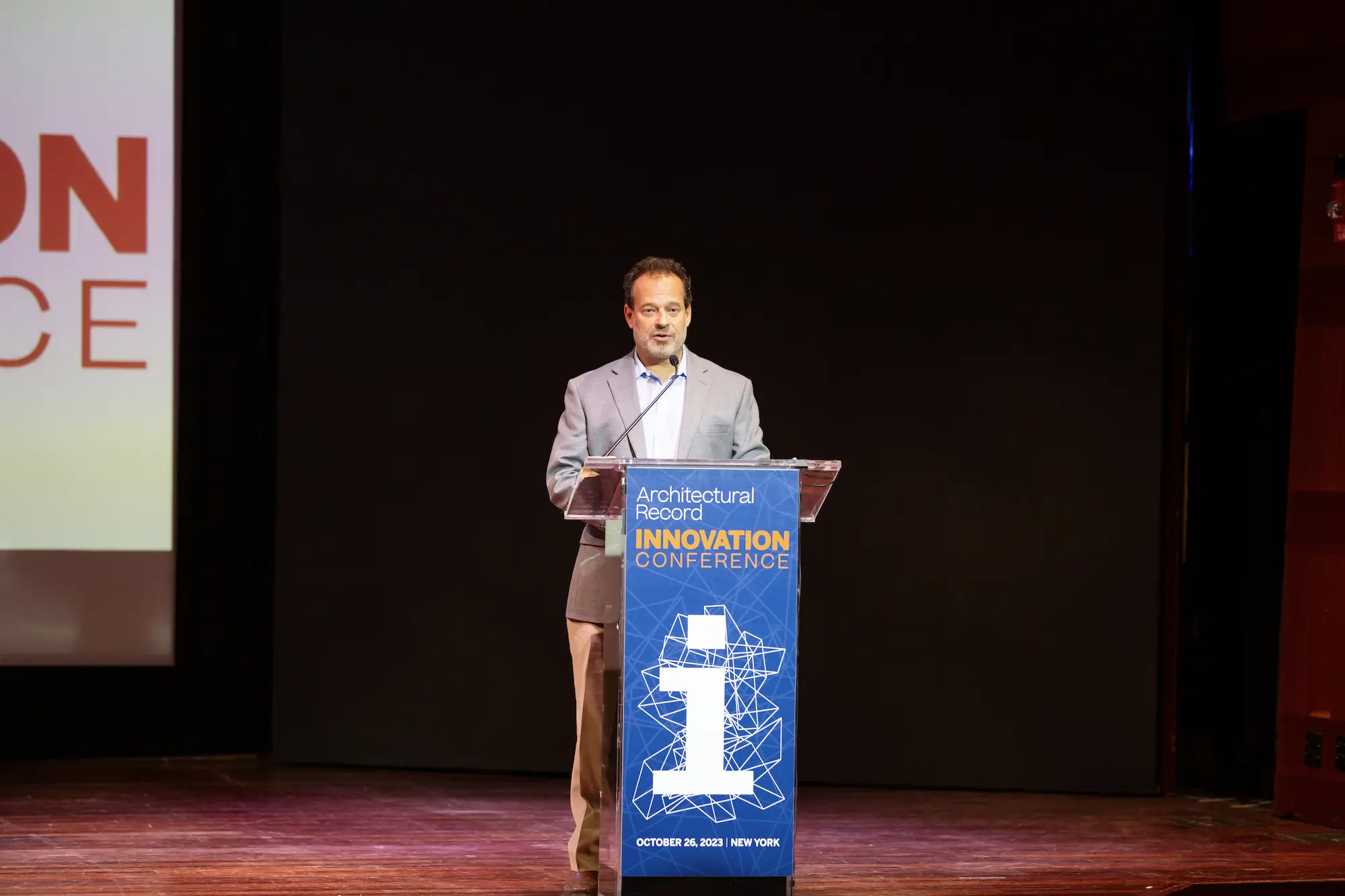
RECORD editor in chief Josephine Minutillo and publisher Alex Bachrach. Photos © Kristen Blush
However, it was a darkened auditorium, the museum’s Edmond J. Safra Hall, that served as backdrop during the bulk of the day’s program. Following welcome remarks from RECORD publisher Alex Bachrach and editor in chief Josephine Minutillo, the first featured speaker to take the stage was REX founding principal Joshua Ramus, who showcased a trio of performing arts projects designed by the New York–based firm, each of them offering radical flexibility, or “tailored specificity” as he calls it. “These, theoretically, incredibly flexible spaces have actually become a kind of straitjacket, in which their users have the ability to build something into it and basically can never really deviate from that initial build,” Ramus said of the largely rigid white cubes and black boxes of yore. “It’s about empowerment, that we create buildings that empower our users to do and conceive things they simply couldn’t have done or conceived.”
Fittingly, one of these typology-challenging performing arts spaces designed by REX is a neighbor of the Museum of Jewish Heritage Museum: the Perelman Performing Arts Center, a marble panel–clad “mystery box” of a building which opened to the public in September at the World Trade Center site. Also discussed in detail was the just-inaugurated Lindemann Performing Arts Center at Brown University in Providence, a multipurpose arts venue—RECORD’s November 2023 cover project—that takes “automation to the extreme” and the Dee and Charles Wyly Theater in Dallas, a watershed project of sorts dedicated in 2009 in which many of the flexibility-reimagining concepts embraced by Ramus in later projects were first explored.
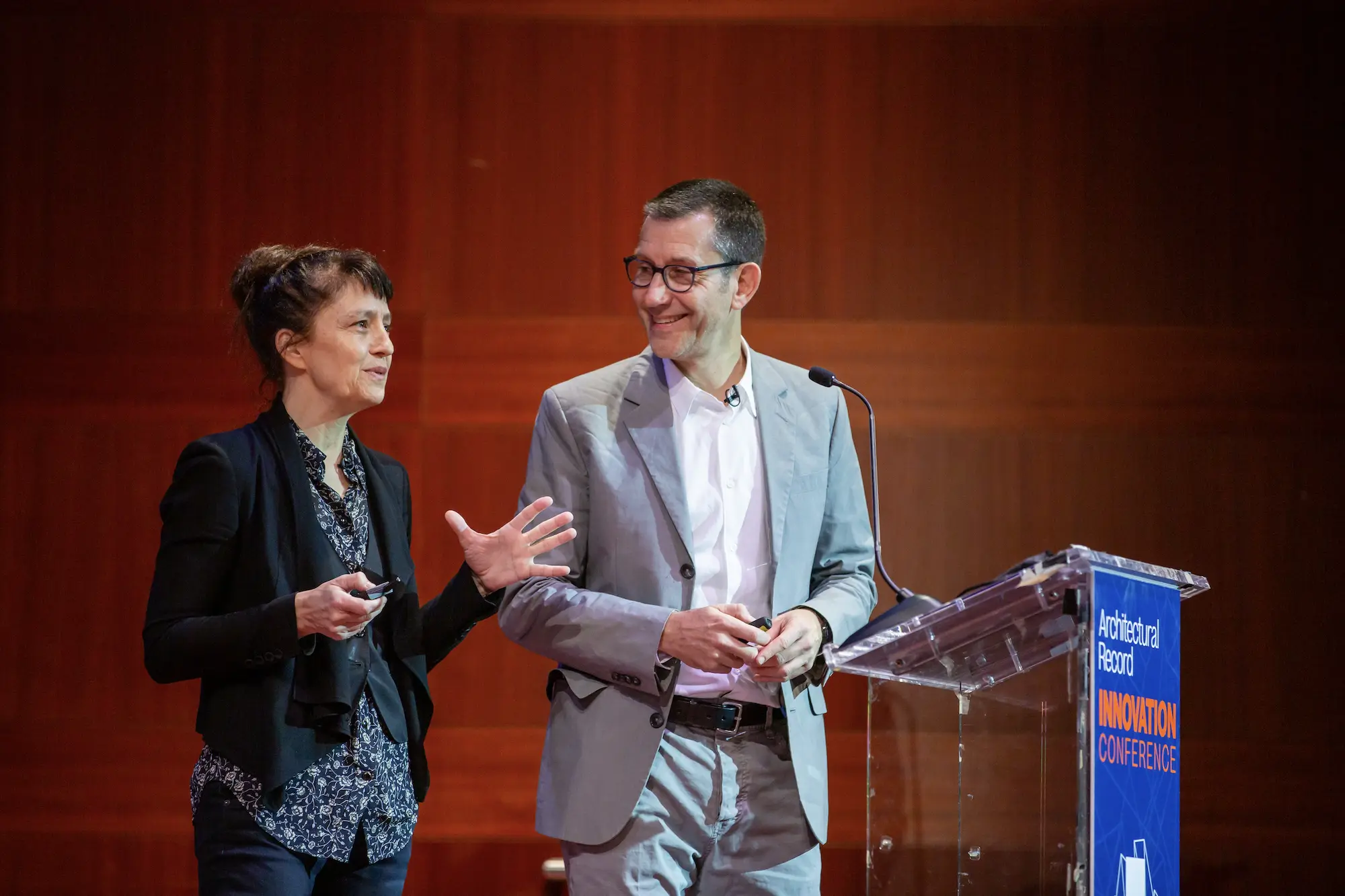
Stella Betts and David Leven of LEVENBETTS. Photo © Kristen Blush
Moving away from hyper-pliable and meticulously engineered performing arts spaces, the day’s second featured speakers, David Leven and Stella Betts of New York–based LEVENBETTS, turned their attention to public libraries. Leven and Betts detailed several different branch libraries in New York City that have undergone—or are currently undergoing—dramatic adaptations to meet continually shifting operational and programmatic needs: The interim Brooklyn Heights branch library housed within the Our Lady of Lebanon Church; the forthcoming renovation of the nearly 70-year-old Borough Park Library in Brooklyn; an also-forthcoming “new chapter” for the aging Baisley Park Community Library in South Jamaica, Queens; a recently completed interior and exterior facelift of Brooklyn’s East Flatbush Library, as featured in the October issue of RECORD; and, finally, the flood resiliency-minded reconstruction of Brooklyn’s Red Hook Library that is currently underway.
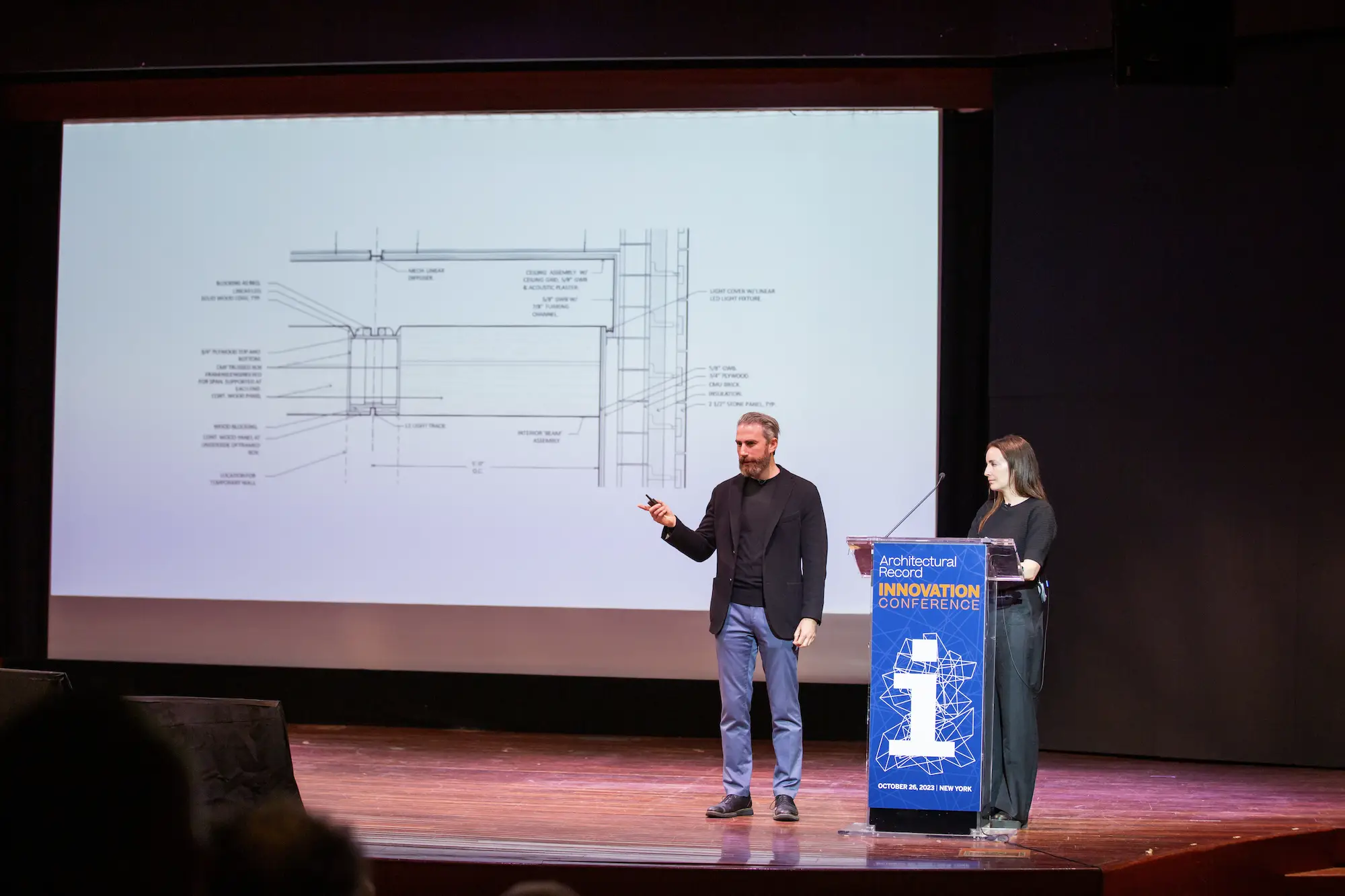
Nathan Rich and Miriam Peterson of PRO. Photo © Kristen Blush
Following LEVENBETTS, the founders of another New York–based, Design Vanguard-winning practice (2018) discussed a pair of in-progress projects. In their presentation, Peterson Rich Office (PRO)’s Miriam Peterson and Nathan Rich shared two projects that insert new spaces for art into varying historical contexts: the Shepherd, a community arts space located within a 110-year-old former Catholic church that will anchor a nascent cultural campus in Detroit’s East Village neighborhood when it opens next spring; and the Davison Art Gallery at Wesleyan University, a new gallery building neighboring the university’s McKim Mead & White–designed main library. Housing one of the most extensive collections of works on paper in North America, the project—the first new arts building to debut on the Wesleyan campus in nearly five decades—is set to open next year.
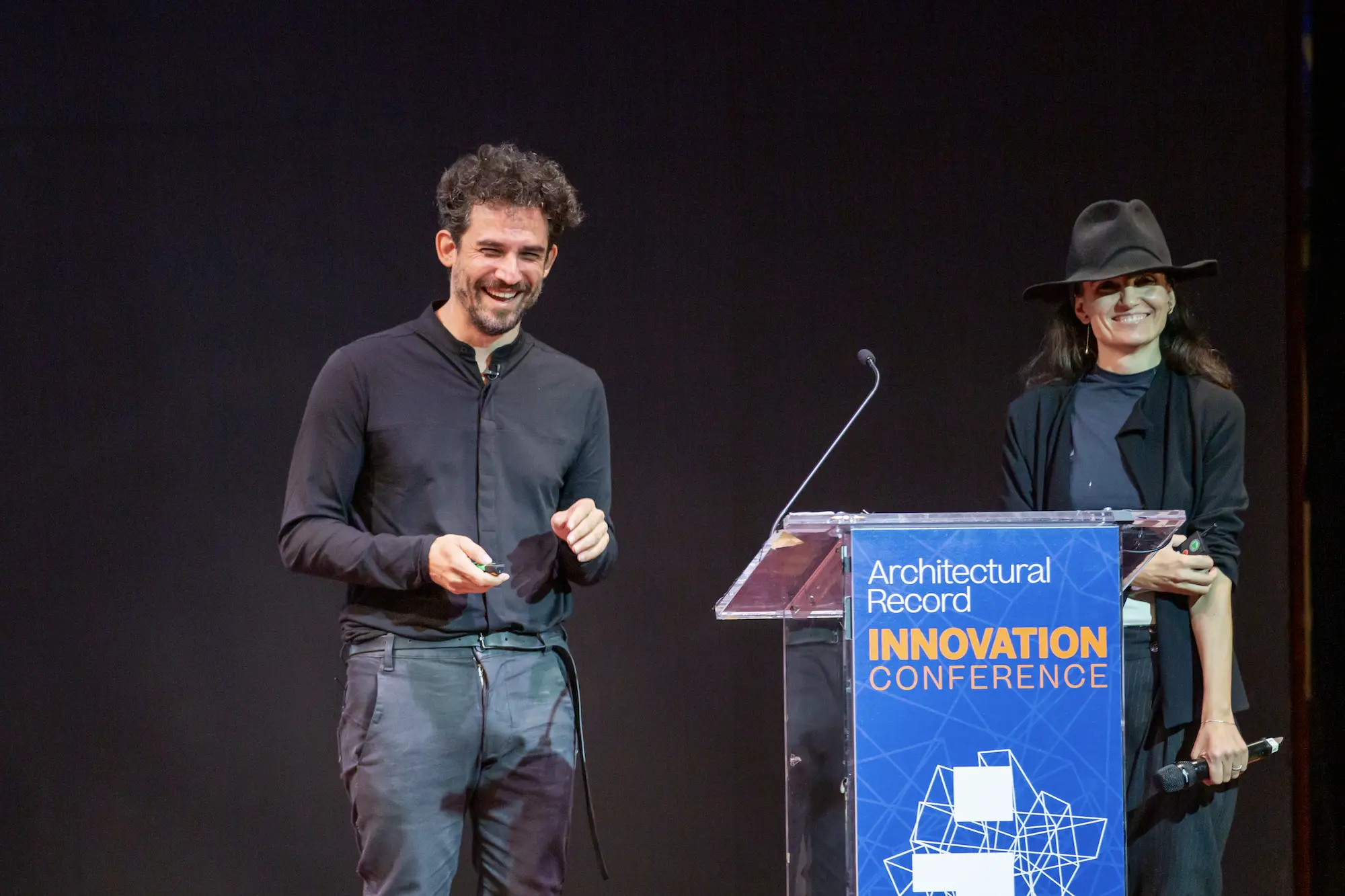
José Toral and Marta Peris of Peris+Toral Arquitectes. Photo © Kristen Blush
The day’s program shifted, geographically speaking, with the introduction of the conference’s next set of featured speakers: Marta Peris and José Toral of Barcelona-based practice Peris+Toral Arquitectes. In their lively, bi-lingual talk, Peris and Toral introduced their concept of Integral Sustainability and how economic, social, and environmental concerns are applied to a range of social housing commissions helmed by the firm in their native Spain. Projects discussed include a climate-responsive affordable housing complex in Ibiza; a cooperative housing project in Barcelona; a social atrium-anchored apartment block in Barcelona that appeared on the cover of RECORD’s October 2023; an 85-unit social housing project just outside of Barcelona that incorporates mass timber; and a sandstone-faced project in Mallorca.
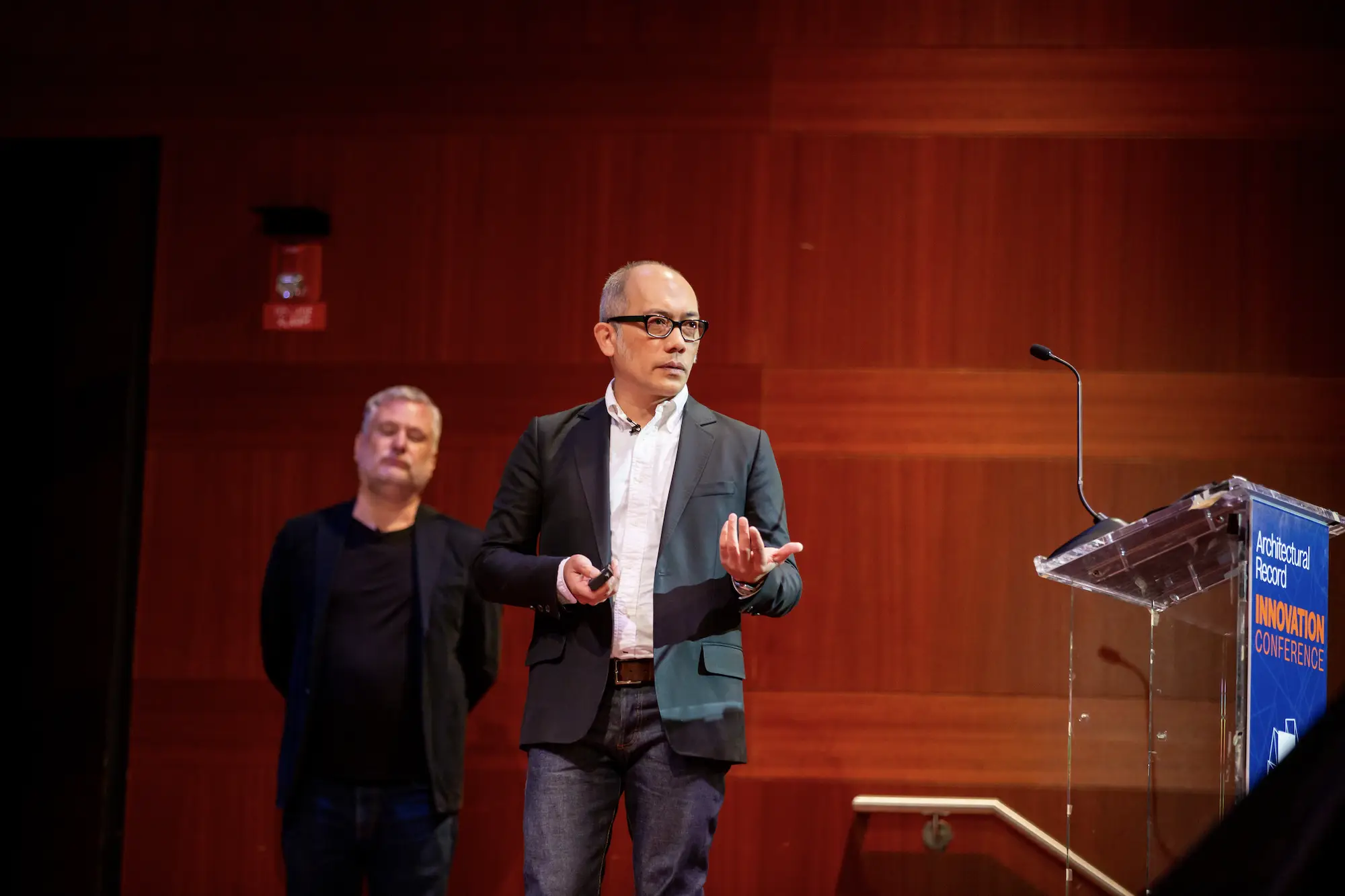
Roberto de Leon (foreground) and Ross Primmer of de Leon & Primmer Architecture Workshop. Photo © Kristen Blush
After a break for lunch, Roberto de Leon and Ross Primmer, the cofounders of Louisville, Kentucky–based 2010 Design Vanguard firm de Leon & Primmer Architecture Workshop, picked things up with a wide-ranging talk that, among other things, touched down on the challenges of taking on Midwestern cultural projects with often modest budgets. “We liken it to starting with an eight-pack box of Crayola crayons, and somewhere within those eight crayons we have to find something interesting,” said de Leon. Projects shared by de Leon and Primmer included a low-cost, mixed-use project in Louisville’s East Market District that utilizes pole barn construction methods and serves as both studio and home to the architects; a sensitive renovation and expansion of the Filson Historical Society in Old Louisville (please include link I added); a mass-timber event pavilion at Historic Locust Grove, an 18th-century farm site in Louisville; and the Rowan Pump Station, an infrastructural project with an LED-integrated facade realized as part of a larger transformation of the Louisville riverfront. De Leon and Primmer also previewed their renovation of the Lloyd Library and Museum in downtown Cincinnati, an on-the-boards project that marks the firm’s first exploration into terra-cotta.
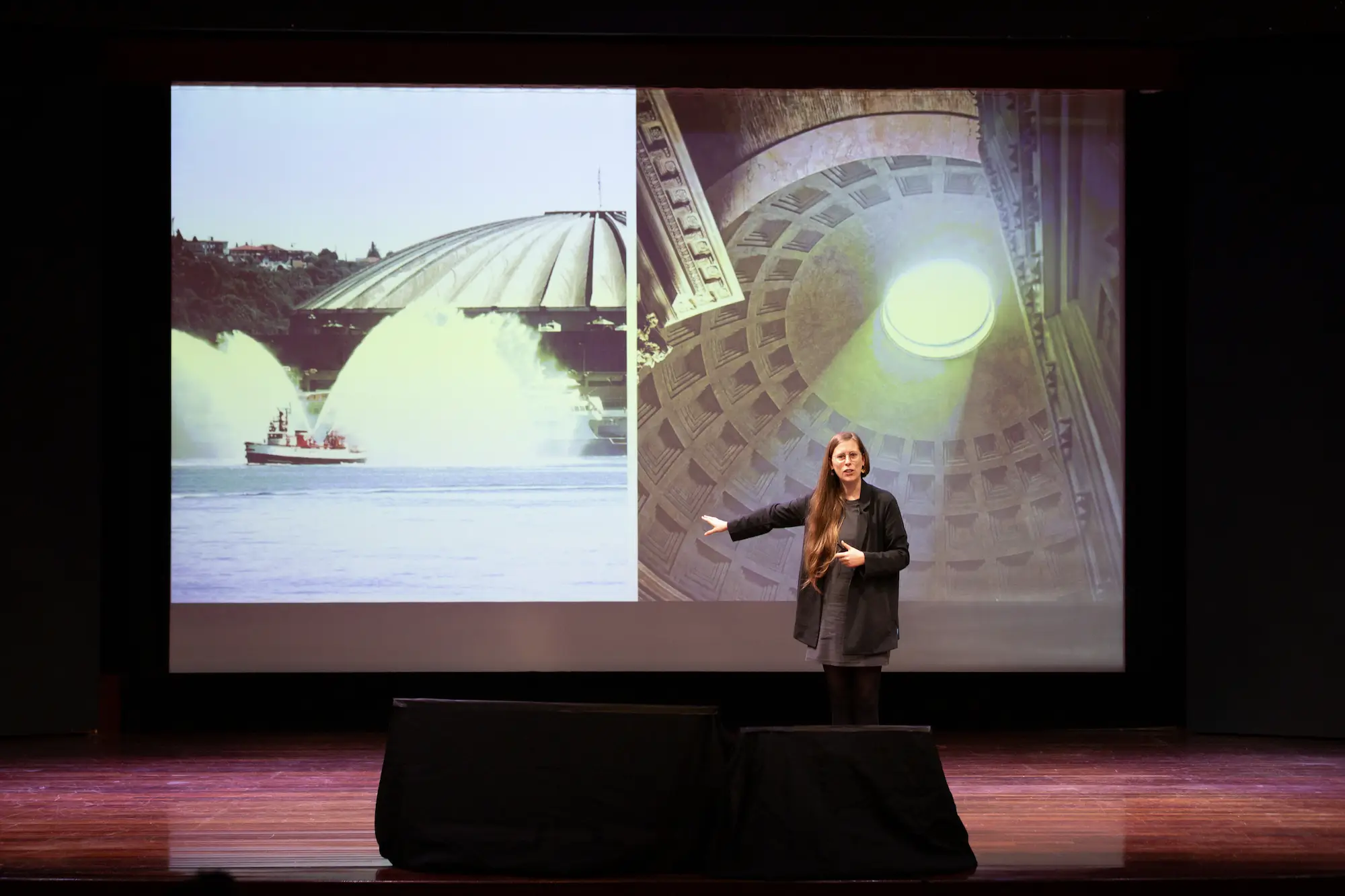
Catherine De Wolf. Photo © Kristen Blush
Presenting next was Catherine De Wolf, a Belgian-born engineer and professor at Switzerland’s ETH Zurich, where she serves as chair of the school’s Circular Engineering for Architecture lab. Kicking her talk off with a video depicting the 2000 demolition of the Kingdome in Seattle and concluding with a quote from Buckminster Fuller (“to change something, build a new model that makes the existing model obsolete”), De Wolf made the case for how emerging digital technologies such as AI can be used to advance circular construction methods—leaving nothing to go to waste. “To be able to build circular, you need to be creative,” said De Wolf. “And to be creative, you need to make connections between materials, and most importantly, between people.” She added: “You need to look at building materials the same way that you looked at LEGO when you were little—when you want to build something, you need to be able to unbuild it to rebuild something new and then repeat.”
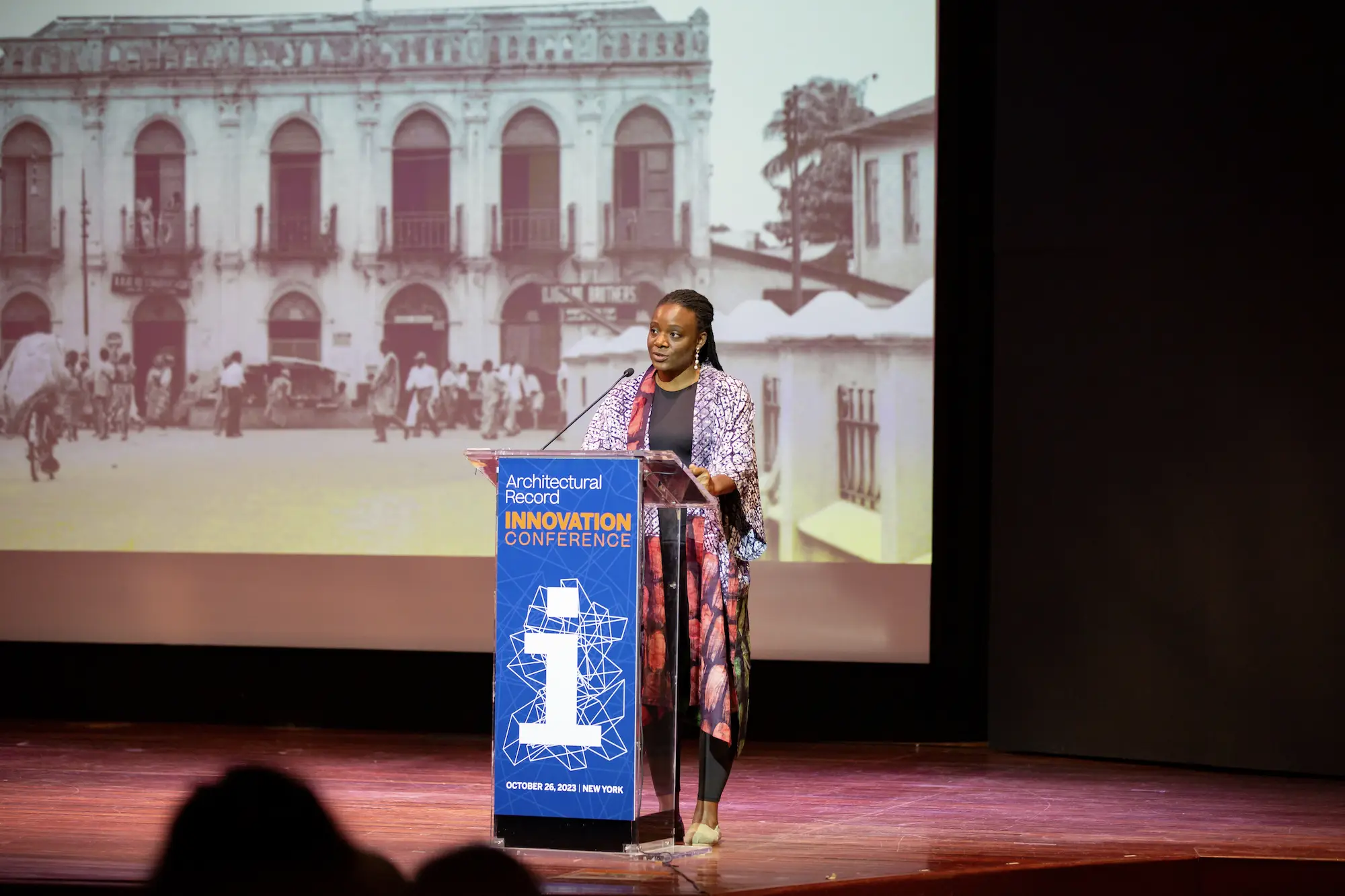
Olayinka Dosekun-Adjei of Studio Contra. Photo © Kristen Blush
Following De Wolf, Olayinka Dosekun-Adjei, creative director and co-founder of 2023 Design Vanguard firm Studio Contra, discussed two recent projects led by the 15-person practice based in Lagos, Nigeria: the Institute for Contemporary African Art and Film in Ilorin, the capital city of Kwara State in north-central Nigeria, and a mass-timber boutique hotel—or Art Guesthouse— in Benin City, Nigeria, planned as part of a larger cultural campus.
“What we’ve been doing over the past six years as a team is researching pre-modern West African urban, architectural, and material cultural traditions in order to find subtle or overt opportunities, linking our proposals to these rich traditions, which are dying—or practically dead—and thereby reviving them in some way and giving them new vitality and meaning,” explained Dosekun-Adjei. “We do this through what we call a productive synthesis … quite simply, it’s about finding for each brief and each client a relevant connection between the deeper past of West Africa and the technologies and analyses of the present time that would naturally work their way into projects.”
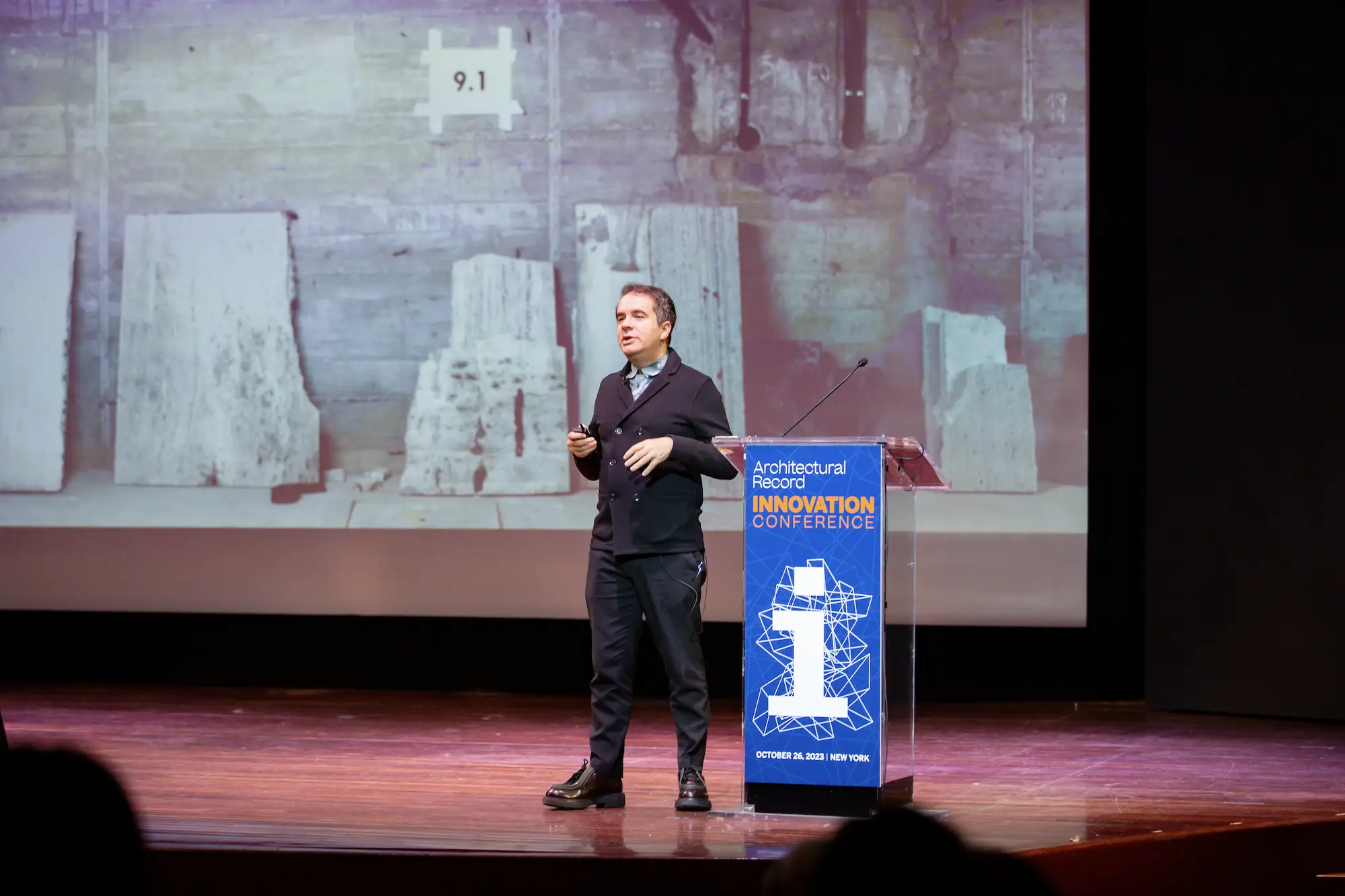
Andrés Jaque. Photo © Kristen Blush
Dosekun-Adjei’s presentation was followed by one by a fellow Design Vanguard who received the honor nearly a decade prior: Andrés Jaque, dean of Columbia University’s Graduate School of Architecture, Planning and Preservation and founder of the Madrid- and New York–based architectural practice Office for Political Innovation. In his talk, Jacque detailed projects including his Colegio Reggio, a private school in Madrid integrated into a public park that students have likened to a “robot built from butter” and the Rambla Climate House, a deeply ecological private residence that incorporates myriad sustainable design strategies meant to help the natural world rebound in the development-scarred ravine in which the home was built. Niebla, the late cat deployed as a mouser in the basement of Mies van der Rohe’s famed Barcelona Pavilion, was also a topic of conversation.
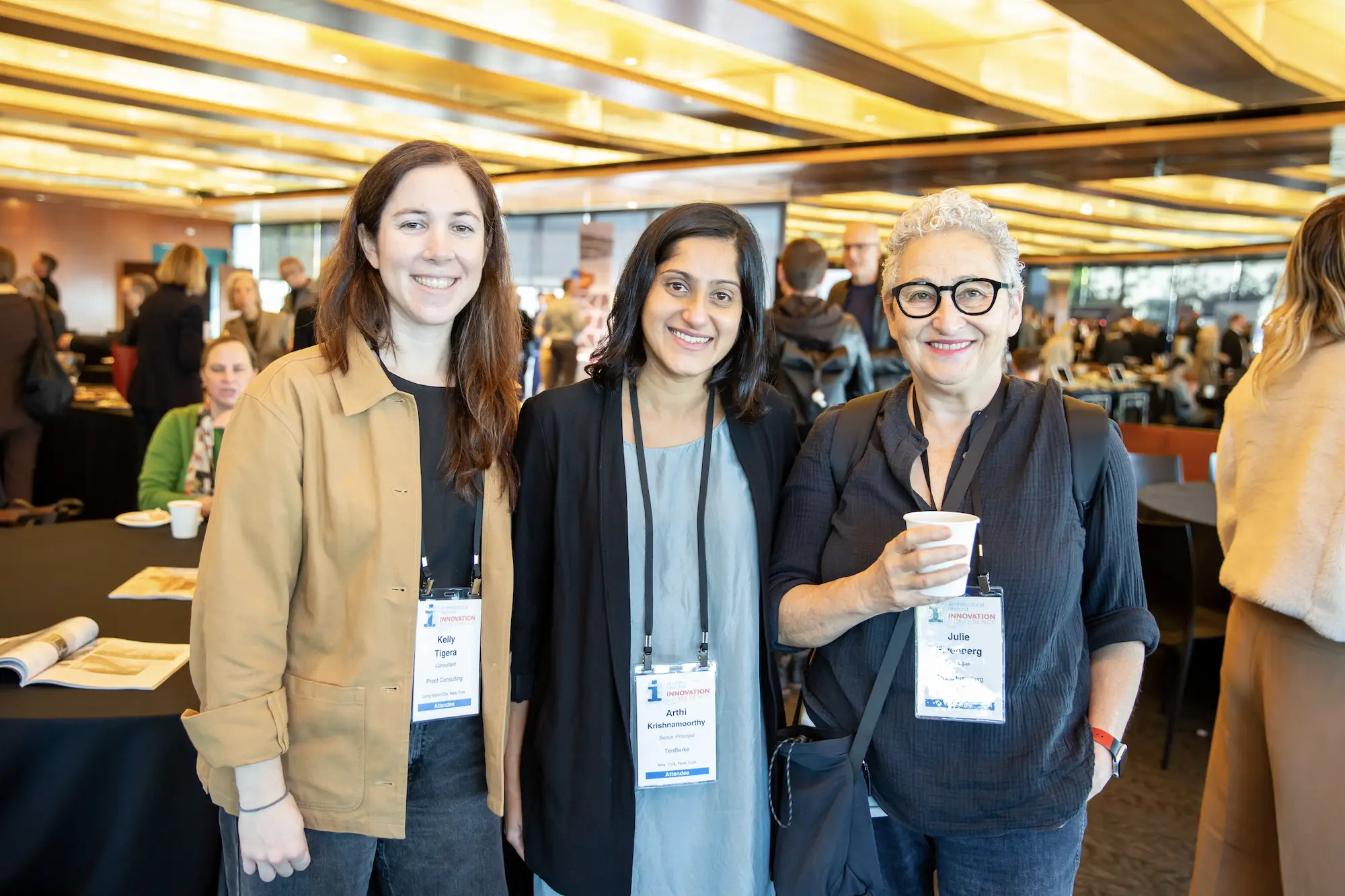
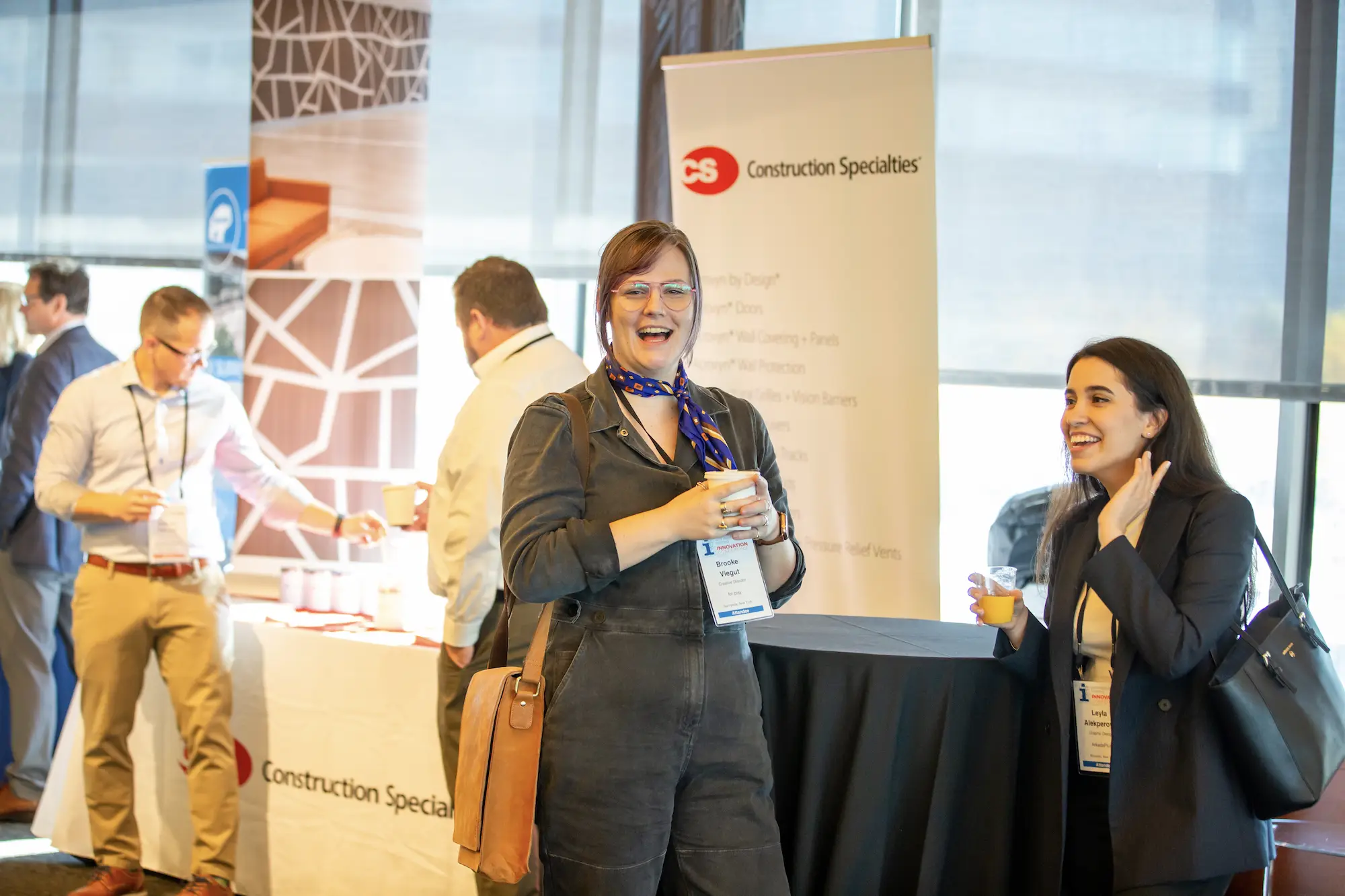
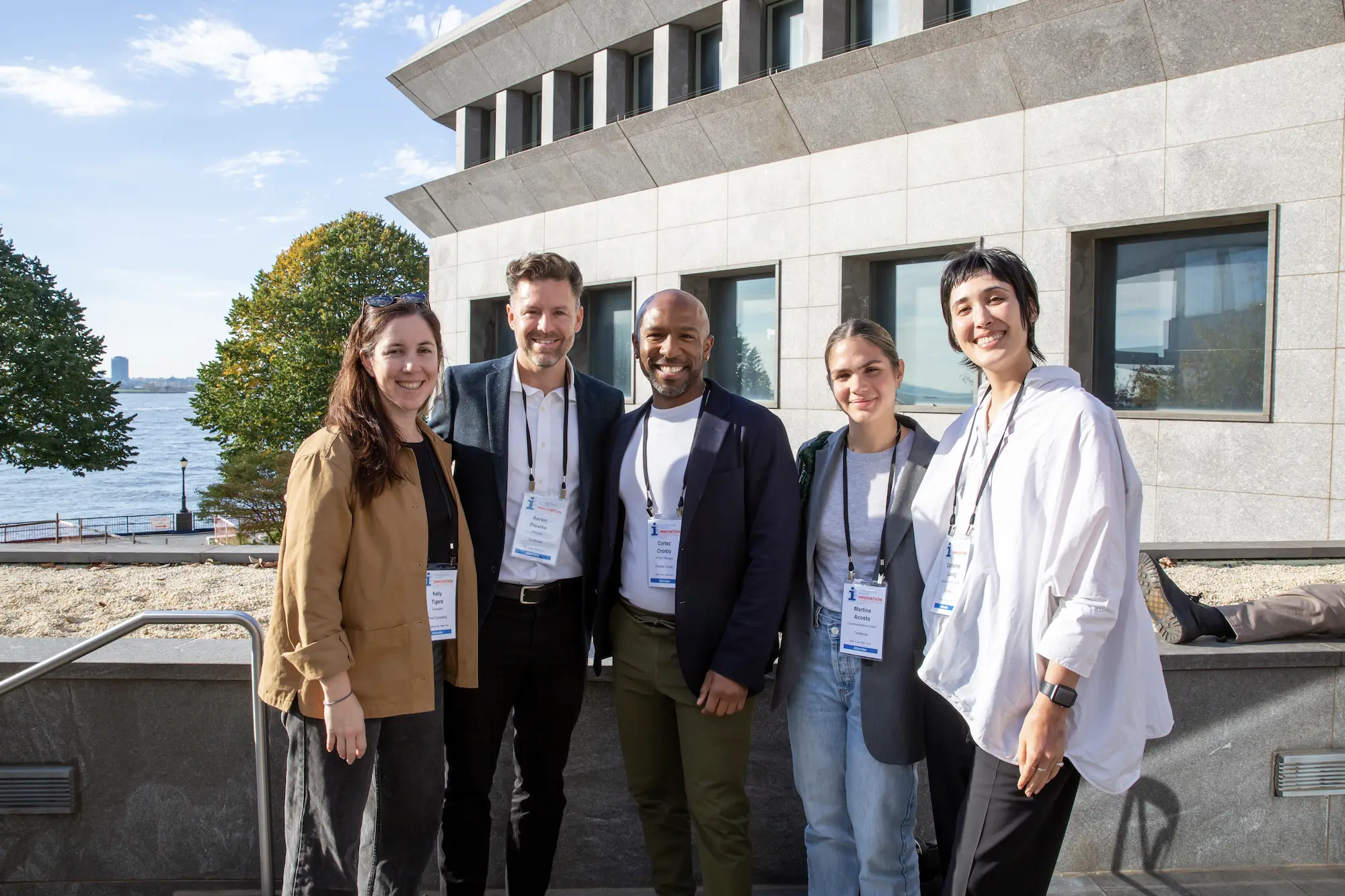
2023 Innovation Conference attendees at the Museum of Jewish Heritage in Manhattan. Photos © Kristen Blush
The 2023 Innovation Conference concluded with a moving and frequently elegiac presentation from Lydon Neri and Rosannna Hu, co-founders of Neri&Hu Design and Research Office, an interdisciplinary practice based in Shanghai. In their talk, entitled “Ruinophilia,” the duo (a 2009 Design Vanguard) shared several completed commissions across multiple typologies—a Shanghai “travelers” hotel, a gallery for a Chinese beloved pastry-maker, a wellness retreat, an arts center, and on—with each project accompanied by a short film. “We argued that the basis for adaptive reuse, more often than not, is actually non-romantic relics from the past,” said Neri. “These remnants, nevertheless, pose important questions in terms of sustainability and construction waste management, as well as deeper philosophical questions regarding origin, originality, and authorship.”
RECORD’s next live event, the Los Angeles edition of Record on the Road, will be held on November 13th at the Colburn School in Downtown L.A.




